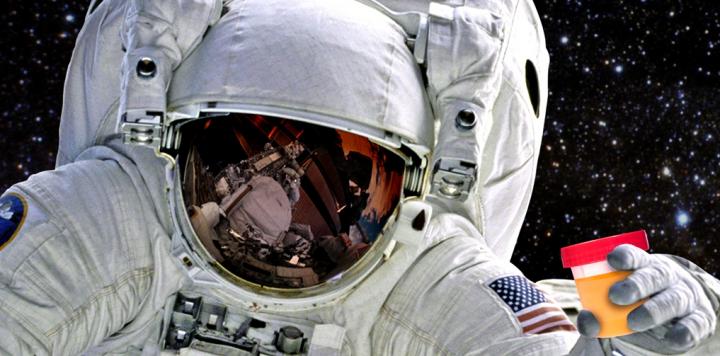Microbes Could Turn Astronaut Pee into Plastic and Nutrients (Video)

Future astronauts could turn their pee into nutrients and raw materials for 3D printers with the aid of some industrious microbes, new research suggests.
Harnessing the talents of the tiny beasts in this way could help humanity extend its footprint out into the solar system, study team members said.
"If astronauts are going to make journeys that span several years, we'll need to find a way to reuse and recycle everything they bring with them," study leader Mark Blenner, of Clemson University in South Carolina, said in a statement. "Atom economy will become really important." [How Will a Human Mars Base Work? NASA's Vision in Images]
Blenner and his team have been investigating the recycling talents of the yeast Yarrowia lipolytica. The researchers found that Y. lipolytica can get the nitrogen it needs from the urea in untreated urine. The microbes can also source their carbon from carbon dioxide (CO2), which could theoretically come from astronauts' exhaled breath or the Martian atmosphere (which is about 95 percent CO2), study team members said. (The yeasts do need help — in the form of algae — to use the carbon in CO2, however.)
One Y. lipolytica strain generates omega-3 fatty acids — nutrients that help keep our brains, eyes and hearts healthy. Omega-3 pills don't have a long shelf life, so having yeast cells churn them out aboard spacecraft could be a big help to astronauts, said Blenner, who reported his team's findings and progress Tuesday (Aug. 22) at the 254th National Meeting & Exposition of the American Chemical Society in Washington, D.C.
"Having a biological system that astronauts can awaken from a dormant state to start producing what they need, when they need it, is the motivation for our project," he said in the same statement.
A different strain of Y. lipolytica has been genetically engineered to produce polyester — a type of plastic that could serve as "feedstock" for 3D printers. Two 3D printers are already aboard the International Space Station (ISS), and NASA officials have repeatedly said that such technology will likely play a large role in crewed missions to Mars and other distant destinations.
Breaking space news, the latest updates on rocket launches, skywatching events and more!
Blenner and his colleagues are trying to increase the amount and varieties of polyester the yeast churn out, the researchers said.
If all this talk of human waste and reuse seems a little gross to you, keep in mind that NASA astronauts aboard the ISS already drink their (recycled) urine. And remember what fictional astronaut Mark Watney used to fertilize his potatoes in "The Martian."
Follow Mike Wall on Twitter @michaeldwall and Google+. Follow us @Spacedotcom, Facebook or Google+. Originally published on Space.com.

Michael Wall is a Senior Space Writer with Space.com and joined the team in 2010. He primarily covers exoplanets, spaceflight and military space, but has been known to dabble in the space art beat. His book about the search for alien life, "Out There," was published on Nov. 13, 2018. Before becoming a science writer, Michael worked as a herpetologist and wildlife biologist. He has a Ph.D. in evolutionary biology from the University of Sydney, Australia, a bachelor's degree from the University of Arizona, and a graduate certificate in science writing from the University of California, Santa Cruz. To find out what his latest project is, you can follow Michael on Twitter.

